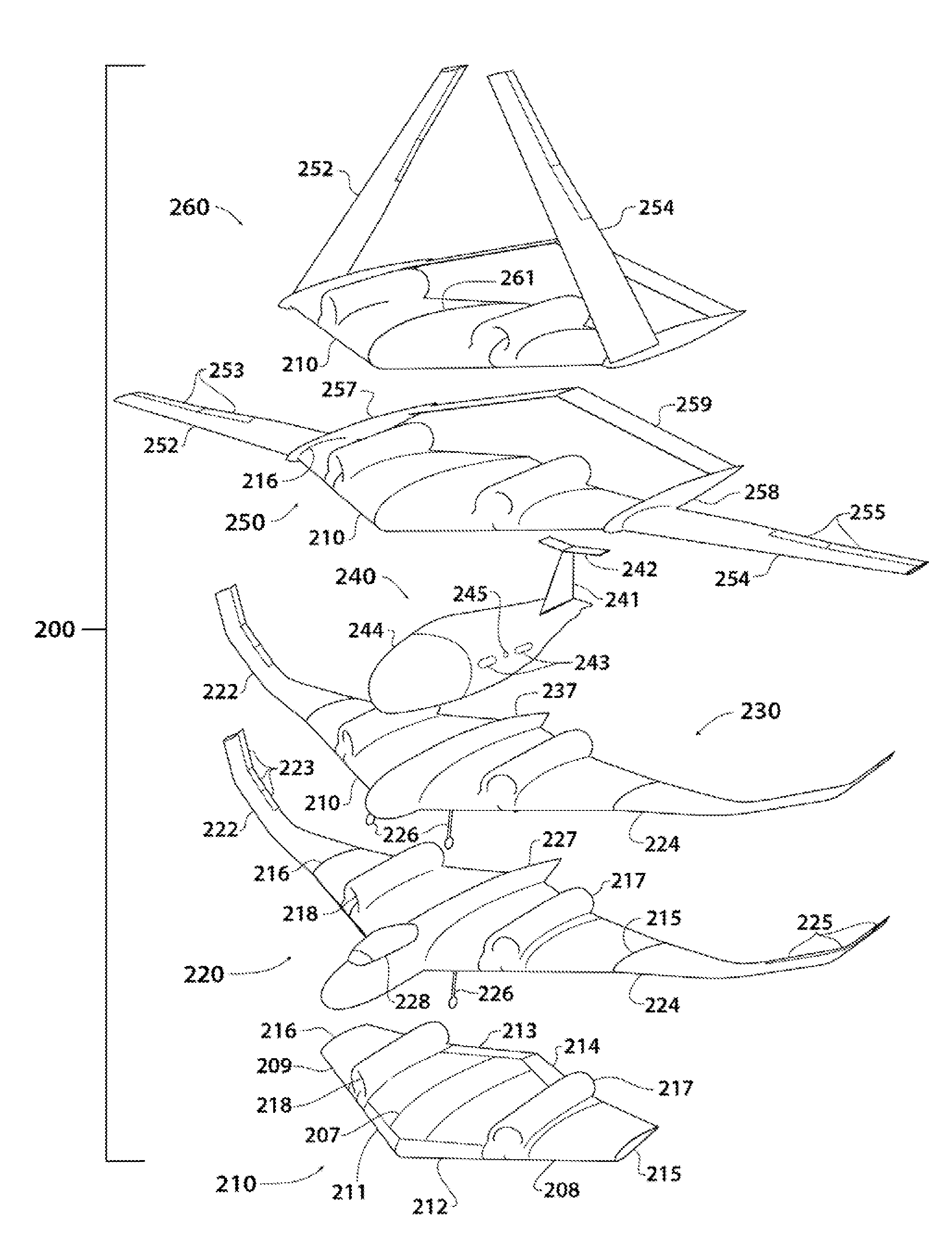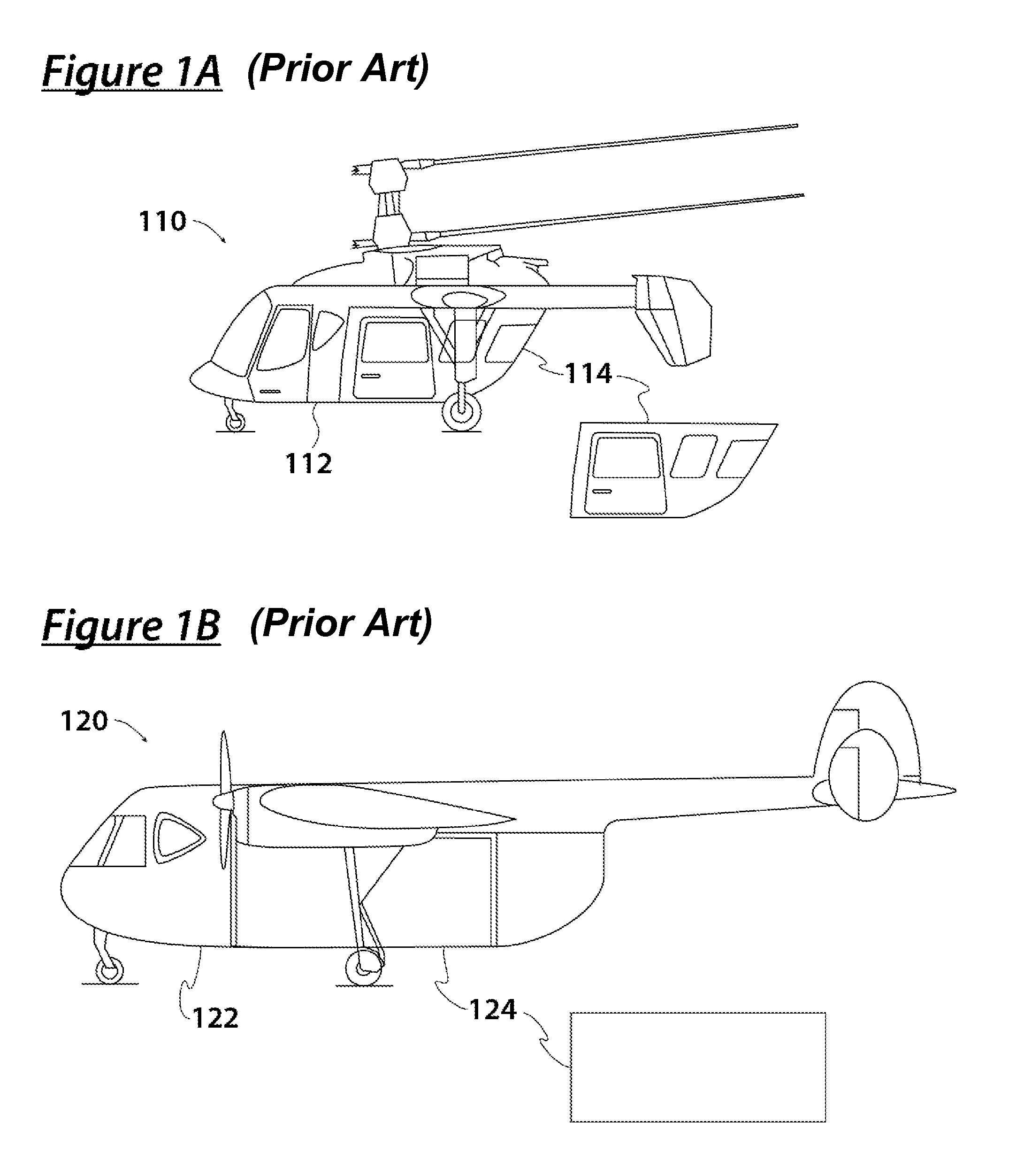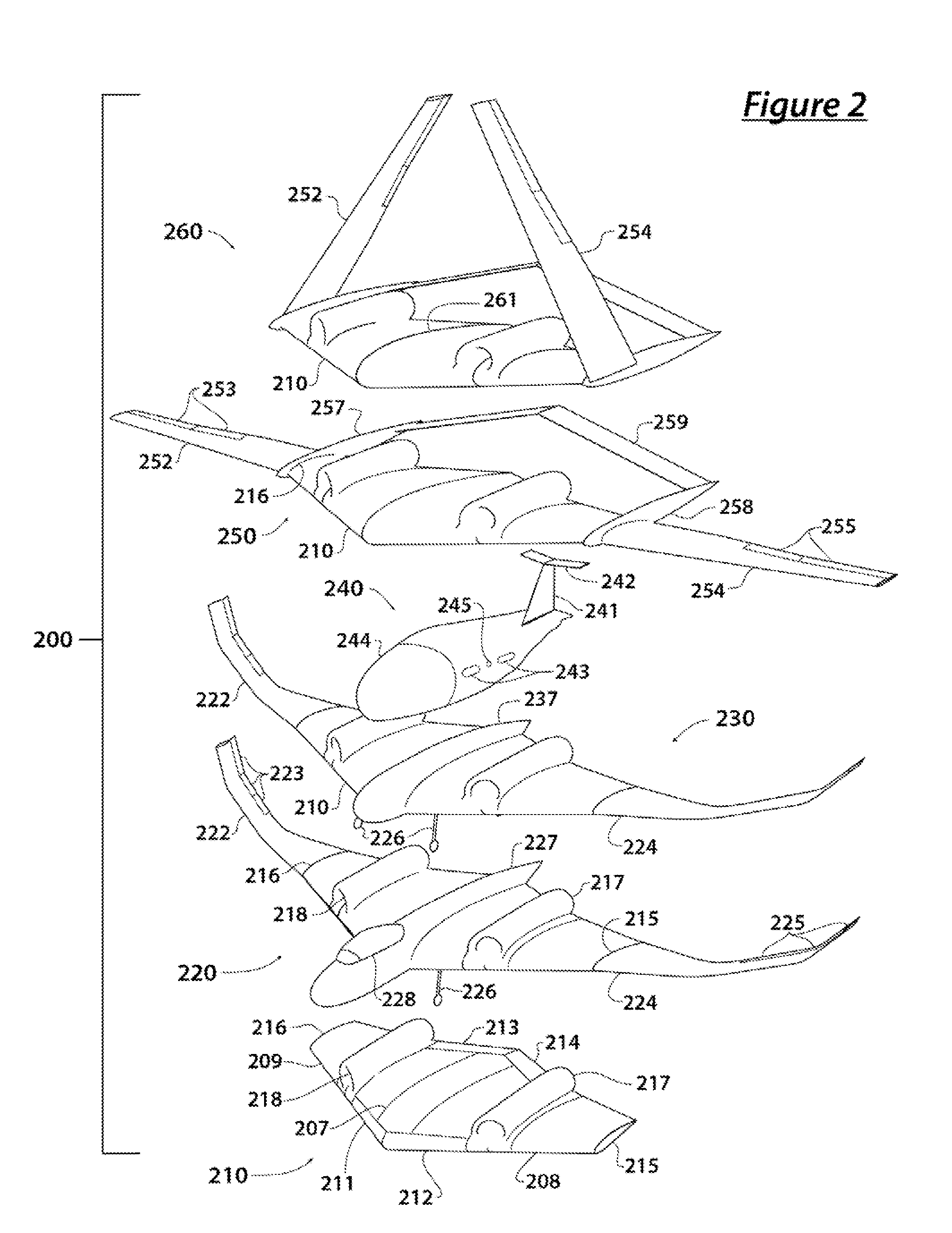Multi-Role Aircraft with Interchangeable Mission Modules
a mission module and multi-role technology, applied in the field of aircraft, can solve the problems of aircraft viability, capital-intensive and usually long process of aircraft development, and each of these prior art approaches has weaknesses
- Summary
- Abstract
- Description
- Claims
- Application Information
AI Technical Summary
Benefits of technology
Problems solved by technology
Method used
Image
Examples
Embodiment Construction
[0034]Along with the drawing, the following detailed description serves to elucidate various aspects of the present inventive subject matter.
[0035]FIG. 2 is a schematic perspective illustration of a preferred modular aircraft kit comprising a center section, various outer wing portions, and various mission modules.
[0036]The modular aircraft kit 200 comprises a center section 210. The center section 210 advantageously features a left interface 215 for a left outer wing member and a right interface 216 for a right outer wing member. In especially preferred embodiments, the left and right interfaces 215, 216 are hardpoints configured to allow folding or removal of the outer wing members for compact stowage. The center section 210 is preferably equipped with provisions for propulsive means. A right engine housing 218 and a left engine housing 217 each fair over an inlet, turbofan engine, and exhaust. When coupled to electric power, a flight control system, and a fuel supply, the engine ...
PUM
 Login to View More
Login to View More Abstract
Description
Claims
Application Information
 Login to View More
Login to View More - R&D
- Intellectual Property
- Life Sciences
- Materials
- Tech Scout
- Unparalleled Data Quality
- Higher Quality Content
- 60% Fewer Hallucinations
Browse by: Latest US Patents, China's latest patents, Technical Efficacy Thesaurus, Application Domain, Technology Topic, Popular Technical Reports.
© 2025 PatSnap. All rights reserved.Legal|Privacy policy|Modern Slavery Act Transparency Statement|Sitemap|About US| Contact US: help@patsnap.com



